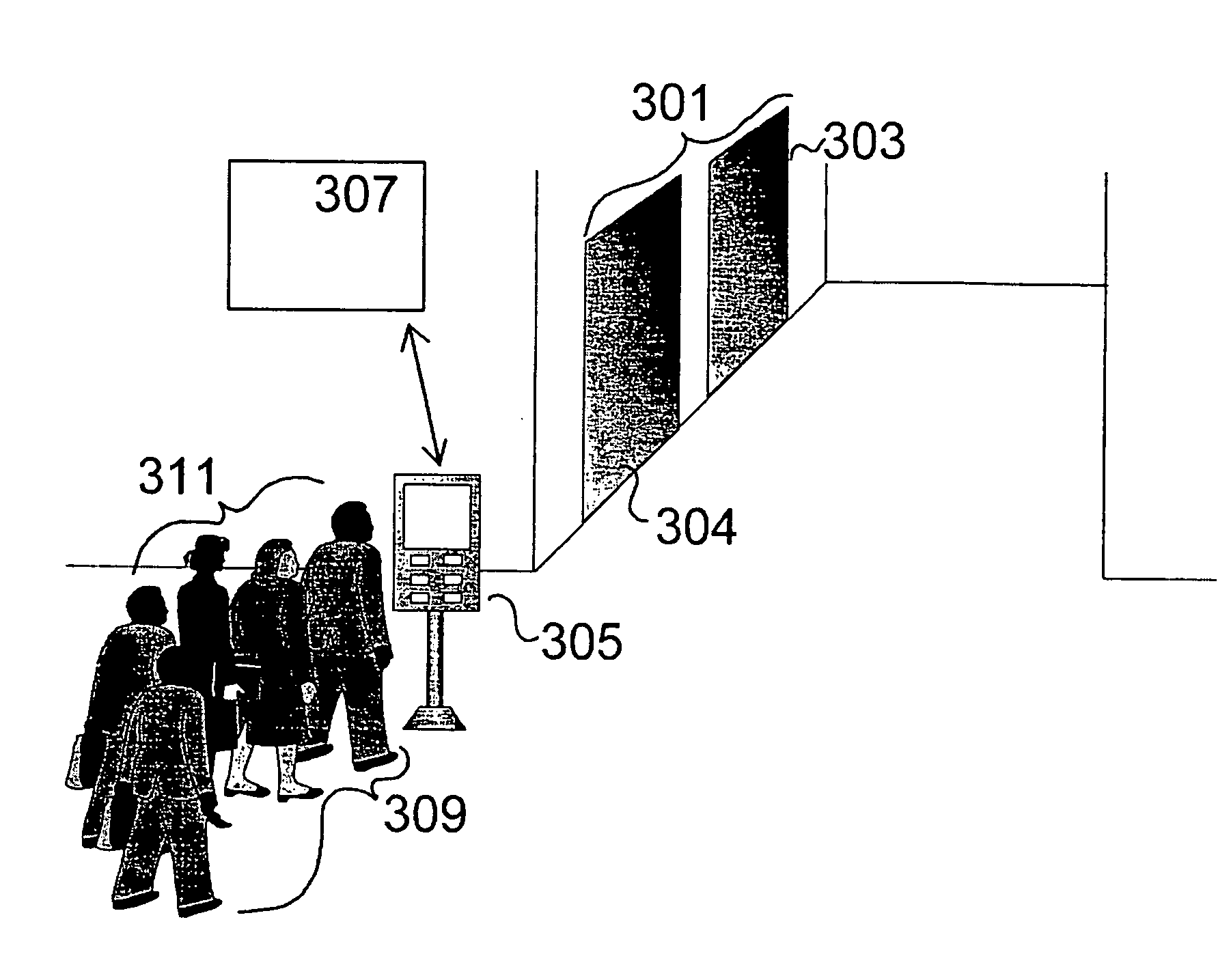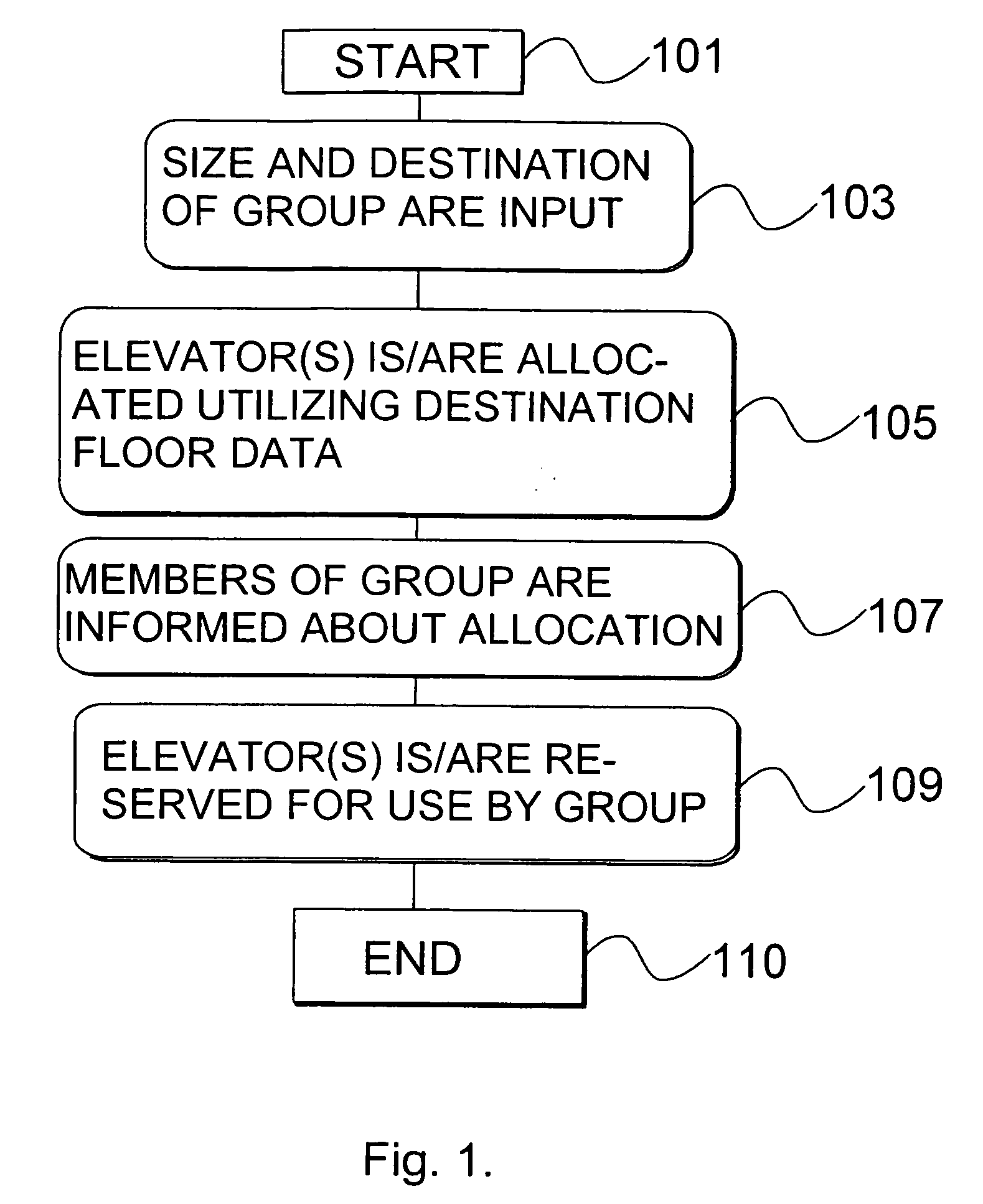Elevator arrangement with hall call destination input
a technology of elevator system and destination input, which is applied in the field of elevator system, can solve the problems of impaired service provided by the elevator system to passengers, incomplete information received by the elevator system as to the number, and how users should behav
- Summary
- Abstract
- Description
- Claims
- Application Information
AI Technical Summary
Benefits of technology
Problems solved by technology
Method used
Image
Examples
Embodiment Construction
[0019]FIG. 1 presents a flow diagram of the operation of the method of the invention. The method for allocating an elevator is implemented in a destination floor elevator system which comprises an elevator group consisting of several elevators, a passenger data terminal for reserving elevators for use by passengers and an elevator group control system for controlling the elevators, said control system responding to signals from said passenger data terminal. A feature typical of the destination floor elevator system is that a passenger data terminal is provided on the landing level of the building, i.e. on the floor where people arriving in the building enter to wait for elevator transport to their respective destination floors. Via the passenger data terminal, the passenger informs the system about his / her wish to travel to a given destination floor. Destination floor refers to that floor in the building that the passenger wants to reach.
[0020] Execution of the method of the invent...
PUM
 Login to View More
Login to View More Abstract
Description
Claims
Application Information
 Login to View More
Login to View More - R&D
- Intellectual Property
- Life Sciences
- Materials
- Tech Scout
- Unparalleled Data Quality
- Higher Quality Content
- 60% Fewer Hallucinations
Browse by: Latest US Patents, China's latest patents, Technical Efficacy Thesaurus, Application Domain, Technology Topic, Popular Technical Reports.
© 2025 PatSnap. All rights reserved.Legal|Privacy policy|Modern Slavery Act Transparency Statement|Sitemap|About US| Contact US: help@patsnap.com



